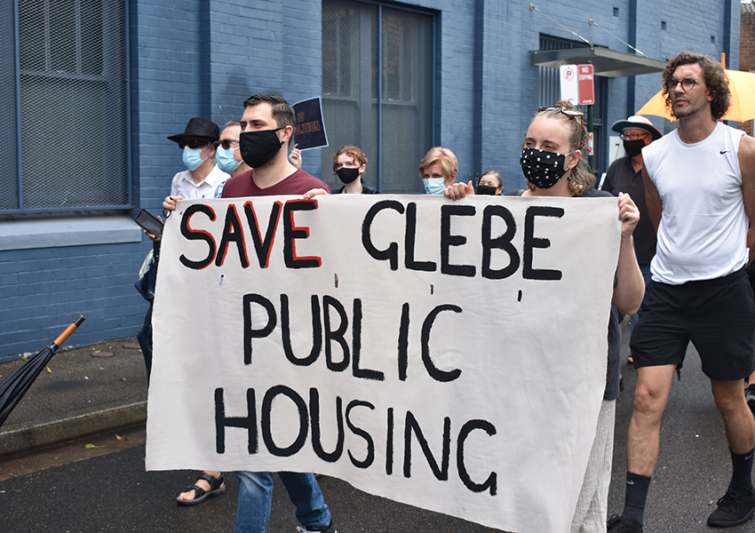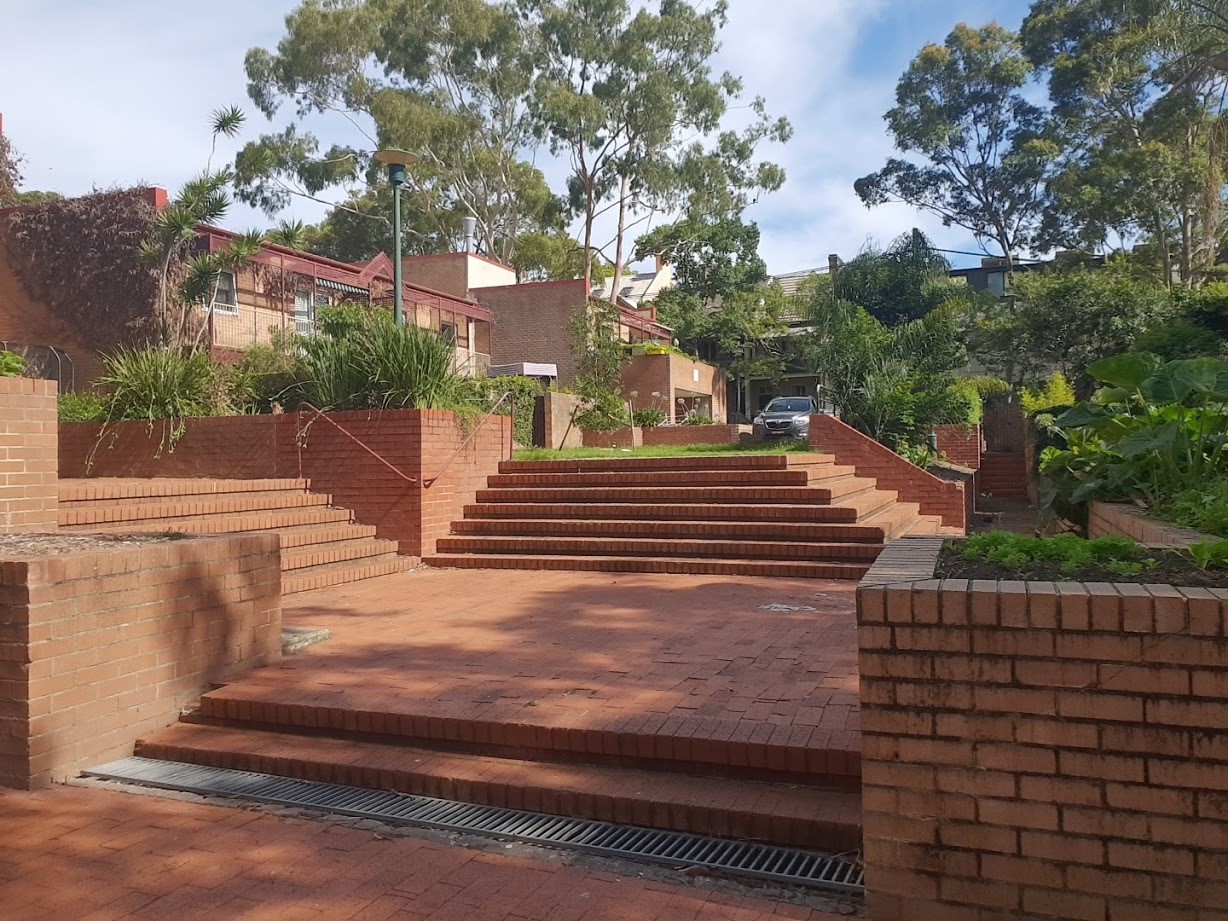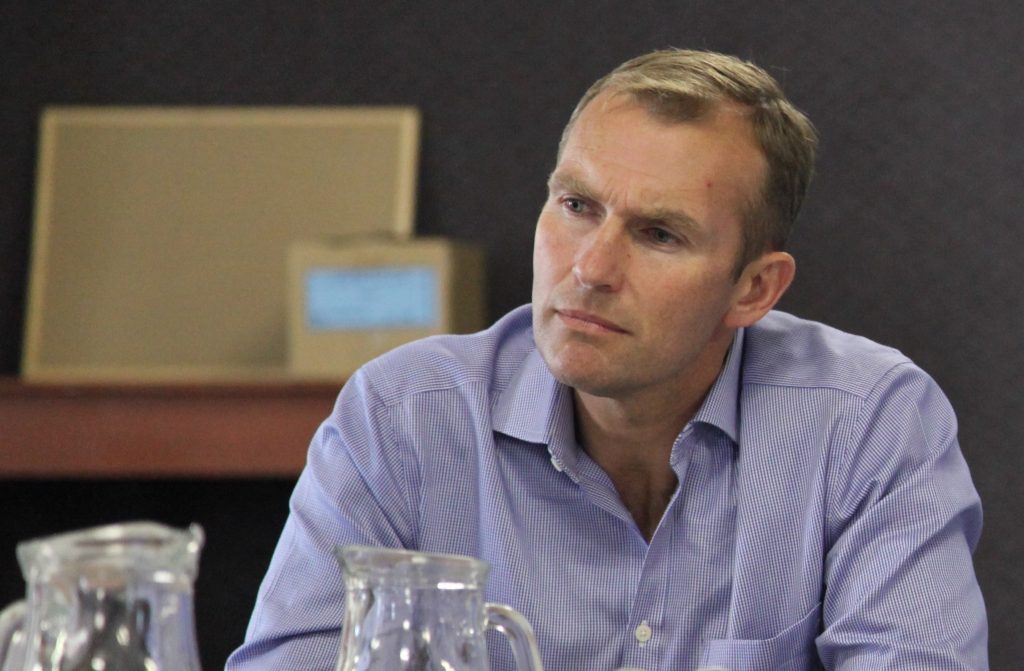by Janet Wahlquist, President, 6 May 2021 from Bulletin 3 of 2021
The Glebe Society is opposed to LAHC’s unprincipled vision to create a tale of two suburbs: one which is low-rise and historic and the other which is high-rise and heartless. – Ian Stephenson, Planning Convenor
On 26 April 2021 Ian Stephenson and I meet (by Zoom) with Lord Mayor Councillor Clover Moore, Deputy Lord Mayor Jess Scully, Councillor Phillip Thalis and local key community groups. This was to discuss the City of Sydney’s current position in relation to proposals by the Land and Housing Corporation (LAHC) for development of public housing sites.
The site most relevant to Glebe is the Franklyn St proposal to demolish the three-storey public housing units and replace them with three x 14 story blocks of units (predominately 1 and 2 bedroom), 30% of which will be for public housing and 70% will be sold off to fund the development and provide some profit for the development of further public housing projects. There are groups from other parts of City of Sydney who have similar issues with the proposals that are being presented in Waterloo and Redfern.

The Land and Housing Corporation (LAHC) which has taken over from the Housing Commission is required to self-fund all expenditure on public housing. This is the rationale behind what is known as the ‘Communities Plus’ program. (City Hub has a great article explaining the ‘Communities Plus’ program: https://tinyurl.com/dy7af5ux).
The result of the failure of the Government to provide any funds for Public Housing (and its maintenance) is the sale of much public housing. In recent times the LAHC has been selling off approximately two public housing homes a week. The Communities Plus program will result in the selling off of current public housing, demolishing the homes that are there, and redeveloping and providing a smaller percentage of what is built for public housing use.

The meeting heard from Emily Bullock from Hands off Glebe who expressed concern about the lack of amenity of the new proposed models which allow for open space in the form of roadways and footpaths with no green space as currently exists in the Franklyn St complex. She also pointed out that the management and selection of tenants for the new complexes was being given over to companies who select the tenants and she was concerned that some traditional public housing tenants will miss out.
Keiran from Glebe Youth Services described how families in Franklyn St have been traumatised after being given notice that they are to be evicted. He said that the new design of the units being primarily 1 and 2 bedrooms are not suitable for many of the Aboriginal families who currently live in Glebe in extended families and need larger-sized dwellings.
One of the concerns expressed by a number of the representatives was the lack of consultation with the community before the announcement and the complete disregard for the disruption to the lives of the current tenants and the effect on the emotional and mental wellbeing of an already vulnerable group of people.
Ian Stephenson, the Glebe Society’s Planning Convenor, said Glebe is one of Australia’s most intact inner-city suburbs. It is a remarkable survivor, hard fought for by people like Jack Mundey and Tom Uren. The Glebe Society is opposed to LAHC’s unprincipled vision to create a tale of two suburbs: one which is low-rise and historic and the other which is high-rise and heartless. We support the provision of additional social housing in Glebe but it should be well-designed low-rise infill which is integrated into Glebe’s urban fabric.

At the meeting, Geoff Turnbull from Redwatch said there needed to be a human services approach and that just rebuilding doesn’t address issues. He said that a social impact assessment should be done before redevelopment. There is currently a right of return to tenants being displaced but this is not useful if like-sized properties are not built.
Graham Jahn, who is the Senior Planner for the City of Sydney told the meeting that the Communities Plus program was an economic model which is subscribed to by both political parties. His view was that the Community Housing Sector responsible for managing and housing the properties had some good projects and good people. He said that LAHC were responsible for bricks and mortar and that people are dealt with by the companies given the contract for managing a particular development. (Members of the Glebe Society have already had a meeting with Bridge Housing which has the contract for managing the housing to be built in Cowper St and Wentworth Park Rd).

We were told that generally, the government doesn’t believe low-income people should live in the city.
The Lord Mayor and Deputy Lord Mayor told the group that their goal was to remain involved in the planning process and get the best results for the community. This involves working with LAHC as, if they are completely oppositional, planning will be taken out of the City’s control. Presently the Minister for Planning has given the Council authority to determine LAHC’s developments in the City. The Lord Mayor and Deputy Lord Mayor were receptive to the concerns of the participants.










There are no comments yet. Please leave yours.